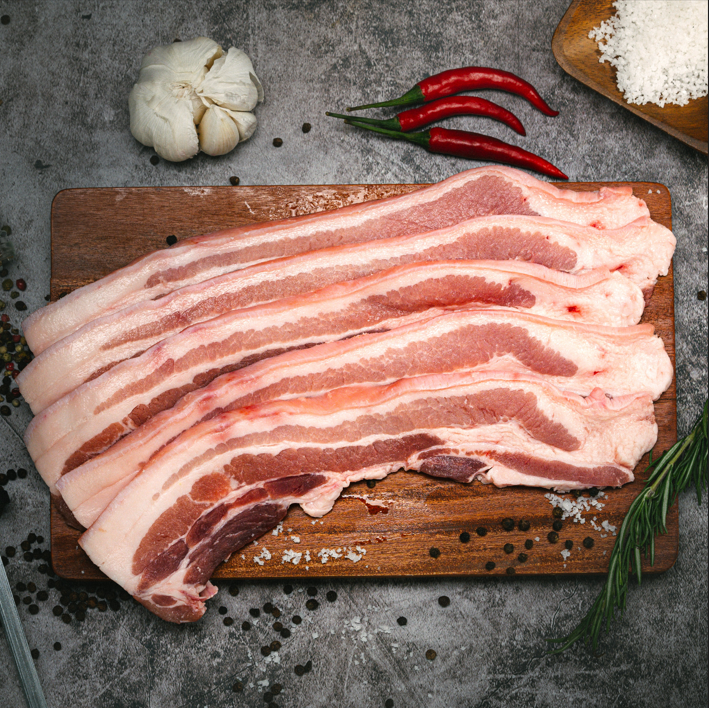
Pork Liempo vs. Pork Belly: What's the Difference?
Share

Pork liempo and pork belly are two cuts of pork that often get confused due to their similarities, but they have distinct characteristics, culinary applications, and flavors. In this blog post, we'll explore the key differences between these two cuts to help you understand when and how to use them in your cooking.
1. The Cut:
Pork Liempo: Pork liempo, often called "liempo" for short, refers to a specific Filipino cut of pork. It comes from the pork belly and typically includes both the lean meat and the layers of fat and skin. Liempo is usually sliced into thin, rectangular pieces suitable for grilling or frying.
Pork Belly: Pork belly, on the other hand, is a broader term that encompasses the entire belly section of the pig, including both boneless and bone-in options. It can be found in various forms, such as skin-on or skin-off, and may include different layers of fat and meat.
2. Culinary Use:
Pork Liempo: Pork liempo is well-suited for grilling, roasting, or pan-frying due to its even fat-to-meat ratio. Its thin slices ensure quick and even cooking, and it's a favorite for Filipino dishes like "inihaw na liempo" (grilled pork belly) and "lechon kawali" (deep-fried pork belly).
Pork Belly: Pork belly, in its various forms, is incredibly versatile. It can be used for dishes like braised pork belly, crispy pork belly, and bacon. The skin-on version is ideal for creating crunchy crackling.
3. Fat Content:
Pork Liempo: Pork liempo usually has a balanced fat-to-meat ratio, making it flavorful and juicy. The layers of fat add richness to the meat, making it a popular choice for grilling and barbecues.
Pork Belly: The fat content in pork belly can vary depending on the specific cut. Skin-on pork belly contains a thick layer of fat and is excellent for achieving crispy skin, while other cuts may have a higher proportion of lean meat.
4. Cooking Methods:
Pork Liempo: The thin slices of pork liempo cook relatively quickly, making it perfect for high-heat cooking methods like grilling and pan-frying. The goal is to achieve a crispy exterior while retaining a tender, succulent interior.
Pork Belly: Pork belly lends itself to slow-cooking methods like braising or roasting to break down the fat and render it into a luscious, melt-in-your-mouth texture. It can also be used in stir-fries or soups.
5. Regional Variations:
Pork Liempo: Pork liempo is particularly popular in Filipino cuisine and is the star of dishes like "sinuglaw" in Cebu and "inasal na liempo" in Bacolod. It's celebrated for its role in regional culinary traditions.
Pork Belly: Pork belly is widely used in global cuisines, from Chinese "red-cooked pork belly" to Korean "samgyeopsal" and Italian "porchetta." Each culture has its unique way of preparing and seasoning pork belly.
In conclusion, while pork liempo and pork belly share a close relationship, they differ in terms of the specific cut, culinary use, fat content, cooking methods, and regional variations. Understanding these differences will help you make informed choices when selecting and preparing these delicious cuts of pork for your favorite dishes. Whether you prefer the Filipino classic of pork liempo or the versatility of pork belly, both have their own culinary charms to offer.
